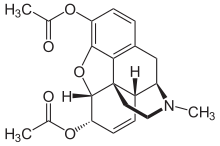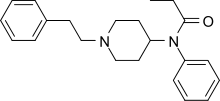Functional analog (chemistry)
In chemistry and pharmacology, functional analogs are chemical compounds that have similar physical, chemical, biochemical, or pharmacological properties. Functional analogs are not necessarily structural analogs with a similar chemical structure.[1] An example of pharmacological functional analogs are morphine, heroin and fentanyl, which have the same mechanism of action, but fentanyl is structurally quite different from the other two.[2]
See also
References
- ↑ Martin, Yvonne C.; Kofron, James L.; Traphagen, Linda M. (2002). "Do Structurally Similar Molecules Have Similar Biological Activity?". Journal of Medicinal Chemistry. 45 (19): 4350. PMID 12213076. doi:10.1021/jm020155c.
- ↑ Mutschler, Ernst; Schäfer-Korting, Monika (2001). Arzneimittelwirkungen (in German) (8 ed.). Stuttgart: Wissenschaftliche Verlagsgesellschaft. pp. 214f, 286. ISBN 3-8047-1763-2.
This article is issued from
Wikipedia.
The text is licensed under Creative Commons - Attribution - Sharealike.
Additional terms may apply for the media files.


